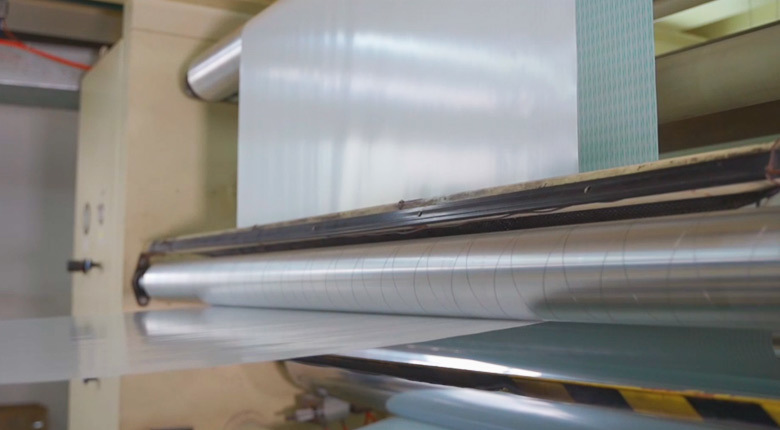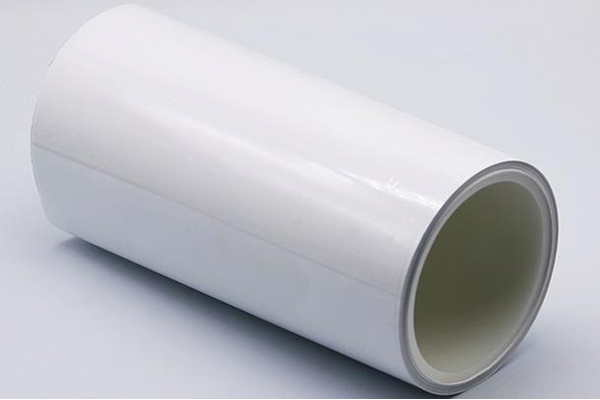What are the factors affecting the poor adhesion of release films?
Release time:
2025-01-08
Release film is a type of film with a low surface energy coating on its surface, which can easily separate from pressure-sensitive adhesives and other sticky materials. The following are the main issues affecting the adhesion effect of release films:
Release film is a type of film with a low surface energy coating that can easily separate from adhesive materials such as pressure-sensitive adhesives. The following are the main issues affecting the adhesion effect of release films:
1. Factors related to the release agent
Types of release agents
Different types of release agents have a significant impact on adhesion effects. Common release agents include silicone release agents, fluorinated release agents, etc. Silicone release agents have good release properties and stability, and are widely used, but different models of silicone release agents (such as methyl silicone oil, vinyl silicone oil, etc.) have different release force characteristics. Fluorinated release agents have excellent chemical resistance and high-temperature resistance, and can better maintain release effects in some special environments, but they are relatively expensive. For example, in the electronics industry, for high-precision electronic component bonding release films, fluorinated release agents may be more suitable because they can ensure stable release force in complex chemical environments.
Quality and purity of the release agent
Poor quality or insufficient purity of the release agent can lead to abnormal adhesion. If the release agent contains impurities, such as unreacted raw materials or other contaminants mixed in during production, these impurities may alter the chemical properties of the release agent, affecting its distribution and curing effect on the film surface. For example, silicone release agents with low purity may exhibit incomplete local curing, resulting in uneven release force of the release film, with some areas easily sticking and others releasing excessively.
Coating amount of the release agent
The coating amount is one of the key factors affecting the adhesion of release films. Excessive coating can lead to excessive release force, making it difficult for the adhered material to peel off from the release film; too little coating may result in insufficient release force, potentially causing adhesive phenomena. For example, when producing label release films, if the coating amount of the release agent exceeds the design standard, the label may not be easily peeled off from the release film during use, affecting the efficiency of label adhesion. Control of the coating amount requires precise coating equipment and strict production processes, generally achieved by adjusting the coating speed of the coating machine, the gap of the coating roller, and the concentration of the release agent.
2. Production process issues
Coating process
Coating uniformity: Uneven coating is a common problem. If the release agent cannot be evenly distributed on the film surface during the coating process, it will lead to uneven release force. This may be due to insufficient precision of the coating equipment, such as uneven surfaces of the coating roller, wear, or blockage of the coating head. For example, when using a gravure coating method, if the depth of the gravure roller's cells is uneven, it will cause inconsistent coating amounts of the release agent on the film, thereby affecting the adhesion effect of the release film.
Drying process: The drying step after coating the release agent is crucial. If drying is insufficient, excessive solvent residue in the release agent will affect the curing effect of the release agent, thereby reducing release performance. Conversely, excessive drying or excessively high drying temperatures may cause the surface of the release agent to skin over or degrade its performance. For example, in hot air drying processes, excessively high temperatures may cause some active components in the silicone release agent to react prematurely, affecting its final release force. Generally, the drying temperature of silicone release agents should be controlled between 80 - 120℃, depending on the formulation and coating speed of the release agent.
Curing process
The degree of curing of the release agent directly relates to the adhesion effect of the release film. Insufficient curing may prevent the release agent from forming a stable release layer, leading to unstable release force; excessive curing may make the release layer brittle, reducing its flexibility and release performance. The curing process is influenced by a combination of factors such as curing temperature, curing time, and curing environment. For example, for release agents cured by ultraviolet (UV) light, the power, exposure time, and distance of the UV lamp will affect the curing effect. If the UV lamp power is insufficient or the exposure time is inadequate, the release agent may not cure sufficiently, and the release force may not meet the expected requirements.
Stretching and tension issues during film production
In the film production process, improper control of stretching and tension can affect the performance of the release film. Excessive stretching may alter the physical structure of the film, causing tiny cracks or thinning of the release agent coating, thereby reducing release force. At the same time, uneven tension can lead to film deformation, which in turn affects the uniformity of the release agent coating and curing effect. For example, in the production of biaxially oriented polypropylene (BOPP) release films, excessive stretching ratios may change the crystallinity of the film, adversely affecting the adhesion of the release agent, ultimately impacting the adhesion effect of the release film.
3. Storage and environmental factors
Storage conditions
Temperature and humidity: The storage environment's temperature and humidity have a long-term impact on the adhesion effect of release films. High-temperature environments may soften or accelerate the aging of the release agent, leading to a decrease in release force; high humidity environments may cause the release film to absorb moisture, affecting the performance of the release agent, and even leading to mold growth. For example, storing silicone release films in a humid environment may cause moisture to chemically react with some components in the release agent, resulting in unstable release force. It is generally recommended to store release films in an environment with a temperature of 20 - 25℃ and a relative humidity of 40% - 60%.
Storage time: Release films have a certain shelf life, and as storage time increases, the performance of the release agent may gradually decline. Even under ideal storage conditions, the release agent may undergo slow chemical reactions or physical changes, leading to changes in release force. For example, certain release agents containing active groups may react with each other after long-term storage, increasing the release force.
Usage environment
Impact of chemicals: If the release film comes into contact with chemicals during use, it may alter its release performance. For example, when using release films in chemical product packaging, the chemicals inside the packaging may penetrate the packaging material and contact the release film, causing chemical reactions in the release agent. Some strongly acidic or alkaline chemicals may corrode the release agent, reducing its release force.
Pollution from dust and impurities: The dust and impurities in the environment may contaminate the surface of the release film, affecting the release effect. When dust particles adhere to the surface of the release film, they can disrupt the uniformity of the release agent, potentially causing local adhesion anomalies during the bonding or peeling process. For example, during the bonding process of electronic components, if there is dust on the surface of the release film, it may prevent the components from fitting tightly or result in adhesive residue during peeling.
More information
Tel: 0086-513-69812188
E-mail: andy@paoyan.com.cn
Address: 188 Baichuan Road, Hai’an High-tech Zone, Jiangsu Province, China.

Sweep and pay attention to Baoyan Technology






